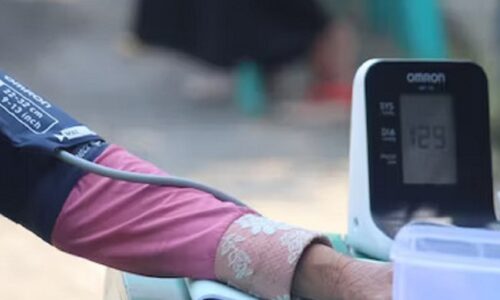
Retinal Artery Occlusion: Causes, Symptoms, and Treatment
A stroke in the eye, medically known as retinal artery occlusion (RAO), is a serious condition that occurs when the blood flow to the retina is blocked. The retina is a crucial part of the eye responsible for processing visual information, and any interruption in its blood supply can lead to significant vision impairment or even permanent blindness. In this article, we will explore the causes, symptoms, and treatment options for retinal artery occlusion.
Causes of Retinal Artery Occlusion
- Atherosclerosis: One of the primary causes of retinal artery occlusion is atherosclerosis, a condition characterized by the buildup of plaque in the arteries. The arteries that supply blood to the retina can become narrowed or blocked due to the accumulation of fatty deposits, leading to a reduction or complete cessation of blood flow.
- Embolism: Retinal artery occlusion can also be caused by embolism, where a blood clot or debris from another part of the circulatory system travels through the bloodstream and becomes lodged in the retinal artery. This sudden blockage prevents adequate blood flow, resulting in damage to the retina.
- Cardiovascular Diseases: Individuals with underlying cardiovascular diseases, such as heart arrhythmias or heart valve disorders, may be at an increased risk of developing retinal artery occlusion. These conditions can contribute to the formation of blood clots, which can then travel to the eye and cause a blockage.
- Giant Cell Arteritis: Giant cell arteritis is an inflammatory condition that affects the arteries, often those near the temples. In some cases, it can lead to retinal artery occlusion. Prompt diagnosis and treatment of giant cell arteritis are crucial to prevent complications, including vision loss.
- Diabetes: Diabetic individuals may experience retinal artery occlusion due to the long-term damage to blood vessels caused by uncontrolled diabetes. Diabetic retinopathy, a complication of diabetes, can contribute to the blockage of retinal arteries.
Symptoms of Retinal Artery Occlusion
- Sudden Vision Loss: The hallmark symptom of retinal artery occlusion is the sudden and painless loss of vision in one eye. The extent of vision loss depends on the severity and location of the blockage.
- Blurred Vision: Some individuals may initially experience blurred vision before the onset of complete vision loss. This can be a warning sign of an impending retinal artery occlusion.
- Visual Disturbances: Patients may report seeing flashes of light or experiencing other visual disturbances, indicating the disruption of normal retinal function.
- Eye Pain or Discomfort: While retinal artery occlusion is typically painless, some individuals may experience mild discomfort or pain in the affected eye.
- Sudden Onset of Floaters: Floaters are small, dark spots or specks that appear in a person’s field of vision. The sudden onset of floaters may suggest the presence of an embolism in the eye.
Treatment Options for Retinal Artery Occlusion
- Emergency Medical Attention: Given the urgency of the condition, individuals experiencing sudden vision loss or other symptoms of retinal artery should seek immediate medical attention. Early intervention can improve the chances of preserving vision.
- Ocular Massage: In some cases, ophthalmologists may perform ocular massage to dislodge an embolism and restore blood flow to the retina. This technique involves applying gentle pressure to the eye to help break up the blockage.
- Antiplatelet Medications: Antiplatelet medications, such as aspirin, may be prescribed to prevent further blood clot formation and reduce the risk of recurrent retinal artery occlusion.
- Intravenous Medications: Thrombolytic medications delivered intravenously may be used to dissolve blood clots and restore blood flow. However, their use is often reserved for specific cases due to the associated risks.
- Surgery: In severe cases, surgical interventions such as embolectomy (removal of the embolism) or bypass procedures may be considered to restore blood flow to the retina.
Conclusion
Retinal artery occlusion is a serious eye condition that demands prompt attention and intervention. Understanding the causes, recognizing the symptoms, and seeking immediate medical help are crucial steps in managing this condition and preventing permanent vision loss. Individuals with risk factors, such as cardiovascular diseases or diabetes, should prioritize regular eye exams to detect and address potential issues before they escalate. As research and medical advancements continue, ongoing efforts to improve the prevention, diagnosis, and treatment of retinal artery occlusion will contribute to better outcomes for those affected by this sight-threatening condition.
Visit here: Dyslexia | ICD-10-CM
Aahana Gupta
Aahana Khan is a versatile content writer who skillfully combines her expertise in biotechnology with creative communication. Her strong educational background in biotechnology provides a scientific lens to her writing, making complicated ideas easy to understand for a wide range of readers. Driven by her passion for effective communication, she seamlessly transitioned from her biotechnology roots to a thriving career in content writing.




